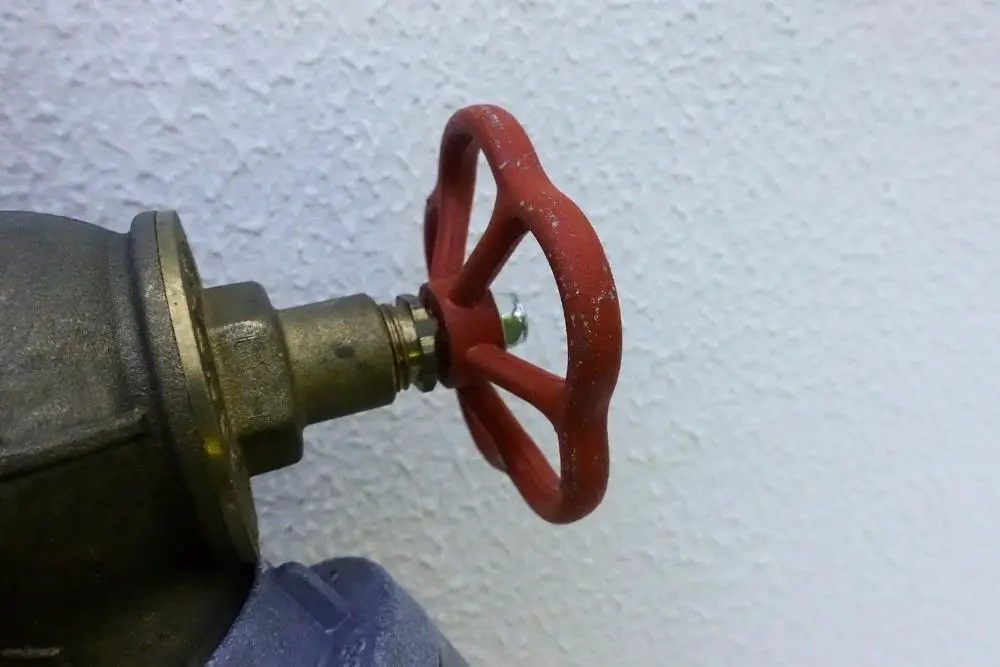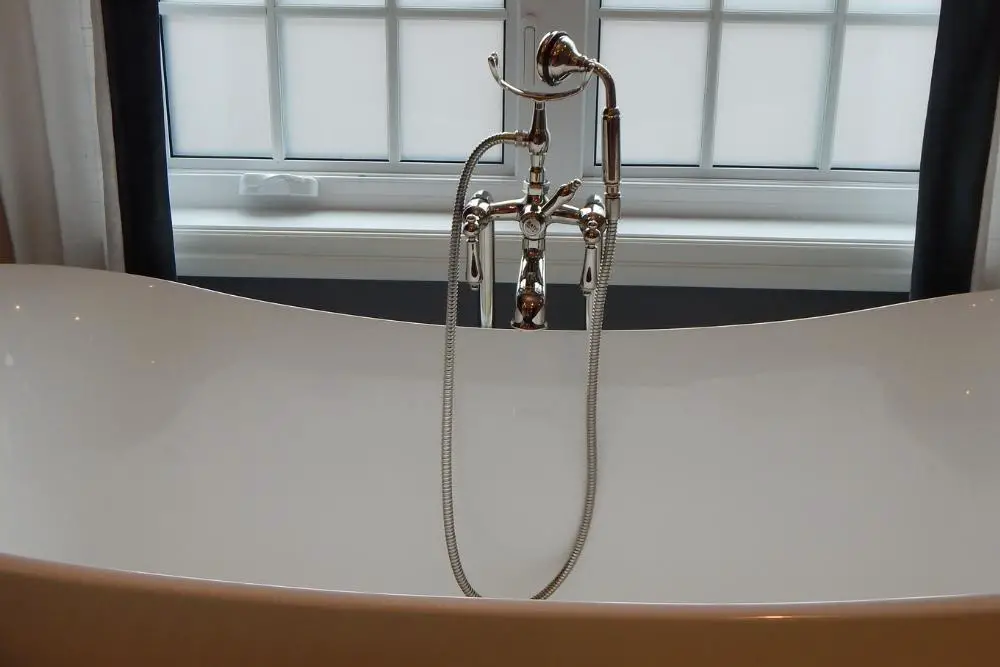Getting no water coming out of the shower and bathtub is a frustrating experience. It can also affect your mood while waiting for the water to flow. Also, there could be times when the water is slow.
No water coming out of a bathtub faucet can be caused by water leaks, broken pipes, or a dislodged tap washer. There may also be problems with other components that are part of the plumbing system.
In this article, you will learn the causes of this incident and what you can do to fix it.
Contents
What Causes Water to Not Flow Out of the Bathtub Faucet?
It can be troubling when you see that water isn’t coming out of the faucets while in the shower or bathtub. Different factors can cause this issue, such as the water supply line not being correctly pressurized.
Waterline Issues
Sometimes, a non-working bathroom faucet is an effect of an issue with the waterline. To inspect if this is the case, you should try to match the other faucets in your house.
Also, it’s essential to check if your neighbors still have running water. If they don’t have running water, your water supplier or the main water line could be the issue.
Faulty Water Valves
Water valves allow you to supply water to each of your home’s water sources. Your faucets and baths might stop working if they’re not working correctly.
You should ensure that the valve is entirely open. If it’s not working, you should contact a professional to fix it. Also, if you reside in an apartment, you might want to check the valve’s location.
Dislodged Tap Washer
If a water flow stops completely after a specific time, it could be caused by the damaged or dislodged tap washer. To decide if this is the case, check all of the faucets in the house.
If one of the taps is still working, it’s probably a single-tap issue. You should also consider replacing the entire tap washer.
Frozen Pipes
If the water in your home is not flowing, frozen pipes may cause it. This issue could be an isolated issue, or it could be related to the main waterline.
If you are in a place where the temperature is below zero, the reason can be the frozen pipes in your home. You can try a heat gun or a hairdryer to thaw the pipes.
Prices pulled from the Amazon Product Advertising API on:
Product prices and availability are accurate as of the date/time indicated and are subject to change. Any price and availability information displayed on [relevant Amazon Site(s), as applicable] at the time of purchase will apply to the purchase of this product.
Water Leaks
If there’s a leak into your plumbing system, it can affect your faucets’ working conditions. A water leak can cause a drop in water pressure, leading to a severe issue.
Check your home’s water supply lines to prevent a leak from happening. Also, look for any signs of water coming from your pipes, such as wet areas beneath your sink.
If you notice that your plumbing pipes are damaged, it could cause you an issue. You’ll need to contact a professional to have them fixed or replaced.
Old Pipes
If your home is over 100 years old, it’s possible that the pipes that deliver your water are not correctly sized or are not working perfectly. It could cause low water pressure and can cause clogs.
To avoid this, ensure that the other water sources are functioning. If you notice strange sounds when you try to use the water, this could signify that the system is not working.
Rusty Water Pipes
Old pipes and poorly installed ones can contain a buildup of rust, which can cause them to collect at the tap.
If this happens, it could cause your water to become orange-colored. It’s also possible that the rust could cause a blockage in the waterline, which could cause a sediment buildup.
Airlocks
Getting rid of an airlock bubble can be challenging, especially in a plumbing system you’re not familiar with. It could cause water to stop flowing correctly in your system, and it could cause further issues down the line.
You can resolve this issue by cleaning out your water line or hiring a professional to do it for you.
Clogged Pipes
If the water in your system is not flowing correctly, it may have a blockage in the pipes leading to it. The reason could be sediment buildup or other issues. It’s also possible that heavy metal deposits and lime could be blocking the lines.
Prices pulled from the Amazon Product Advertising API on:
Product prices and availability are accurate as of the date/time indicated and are subject to change. Any price and availability information displayed on [relevant Amazon Site(s), as applicable] at the time of purchase will apply to the purchase of this product.
How to Fix No Water Coming Out of Faucets?
Before you start using water again, you need to figure out why it stopped. After all, you paid for your electricity bill to ensure that the water company would not cut off your service.
Here are measures that you can observe to determine why the water stops:
Check Other Faucets
Sometimes, a clog or a broken or dislodged pipe can prevent the flow of water from coming out of your kitchen or bathroom. Try different faucets to check if the issue is with your main water supply.
Doing so will allow you to determine if the problem is with the one causing it. If it’s working fine, the issue is with the plumbing system.
Ask Neighbors
If the water is still not coming from your taps, you must contact your neighbors to see if they also have this issue. If they have the same problem, then the water company might have turned off the service to allow them to perform maintenance work.
Replace Tap Washer
Sometimes, a blockage in the tap can prevent the water from flowing out of the faucet. To fix this issue, remove the fixture and replace the washer. Before working on the matter, ensure that the water supply connects appropriately to the tap.
Check Pipe Clogs
If the water is still not coming out of the faucet despite the pipe not leaking, a clog in the pipes could cause it. It can restrict water flow and cause various pressure and flow problems.
If you have a clog in your tubes, you must contact a professional to inspect the area. They can use a video inspection to identify the cause of the issue and get rid of the junk in the pipes.
Frequently Asked Questions
How Do You Clean Sediment Out of Water Pipes?
Getting rid of all of the sediment in your water lines is the easiest and quickest way. Begin by turning on the water in all of your faucets. For about 20 to 30 minutes, the water should run smoothly. If it still doesn’t get clear, try again.
Will an Airlock Clear Itself?
It depends on the size of the airlock. A small airlock can usually clear itself independently, but persistent airlocks will require removal with a manual method.
The easiest way to get rid of an airlock is by attaching a water hose to the tap with the airlock. After securing the hose to the faucet, please attach it to a working one.
Before using the water hose, ensure it’s completely sealed around the taps. Then, turn the tap that doesn’t have an airlock on. It will create pressure inside the hose, which will allow it to run again.
It’s essential to let the water run for around 2 to 10 minutes to enable the airlock to break. If the airlock persists after this period, you might need to contact a professional.
What Causes Low Water Pressure in Only One Faucet?
When low water pressure only happens in one faucet, it has a problem with the aerator.
A buildup of sediment can cause the aerator to become blocked. You can try to determine if this issue is caused by running both hot and cold water through the entire house at the same time.
Conclusion
Various factors can cause the water to stop flowing in your bathtub. These include broken pipes, water leaks, and dislodging tap washer.
To stop it from happening in the first place, you must identify the source of the issue and fix it. A skilled plumber can assist you in resolving the cause of the problem and get the water flowing again.








